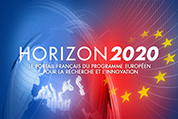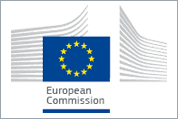WP1 - Wave-based scattering & imaging theory [Months: 1-48]
Objectives
- Elucidate the role of scattering in the reconstruction of Green’s functions from ambient noise
- Apply the ‘coherent multiple scattering’ method to wave-based imaging in acoustics and seismology
- Apply the principle of `effective media’ to enhance the efficiency of numerical methods for seismic and acoustic wave-propagation modeling
- Research data-driven focusing techniques and applications to demultiple and sub-surface velocity analysis.
- Relate observable deterministic waves to observable stochastic properties of multiply-scattered codas, thus enabling both observables to be used consistently to image or monitor changes in medium properties.
- Design and build experiments in WAVES laboratories to test all theories proposed in WP1, and to define their ranges of applicability on real data.
Description of work
Scattering of acoustic and seismic waves by sharp obstacles has often been considered a hindrance to wave or information transmission and imaging of the medium based on simple, infinite-frequency descriptions of wave propagation. This has changed over the past decade, with recent research in acoustics and seismology deriving ways to interpret perhaps-highly scattered energy to map the geometry of the ‘scatterers’, the bulk properties of material, or to increase the focusing power of time-reversed wavefields . Scattering can generate a diffuse coda from a ballistic wave field or increase the randomness of an already diffuse field, thus enhancing seismic interferometry/ambient-noise seismology and their various applications. WP1 will develop new methods that develop further understanding in order to take advantage of scattering, to enhance the resolution of wave-based imaging. It will investigate the role of scattering in diffuse-field interferometry and the trade-off between better reconstruction (via scattering) of the Green's function (at the basis of ambient-noise seismology/acoustics) and its higher complexity due to the presence of many scatterers. It will extend the coherent multiple scattering techniques originally developed in optics to acoustic imaging applications. It will further develop the recently discovered interferometric relationships between energy arriving in complex, multiplyscattered codas and its singly-scattered sub-components, thus allowing both the deterministic and stochastic nature of scattered waves to be used to constrain the medium’s internal structure and properties. Finally, it investigates those aspects of the medium that are not important to (are invisible to) wave propagation, and hence which can be neglected from representations of the medium in so-called up-scaling relations, and from imaging objectives since they can never be imaged. These projects aim to develop novel wave physics, all of which will be tested numerically and in WAVES laboratory experiments, before being applied to ‘field’ data in real applications.
In this section
Key Facts
- Coordinated by Université Pierre et Marie Curie
- 15 participating partners
- 6 European countries and the USA
- 15 trained fellows
- Project budget: 3 227 952.96€
- Project duration: 4 years
- WAVES is a European project funded by the European Union’s Horizon 2020 research and innovation programme under the Marie Slodowska-Curie grant agreement n° 641943.
Contact
Coordinator:
Lapo Boschi (lapo.boschi @ upmc.fr)
Project Manager
Fanny Schultz (fanny.schultz @ sorbonne-universite.fr)



